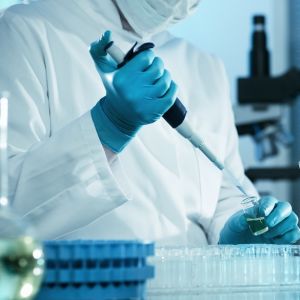Water - Microbiological Analysis Test Method Guide
Posted by Anthony Lewis on October 31st, 2021
Water contamination is one of the most serious problems come to our notice every day. Microbiological analysis by a reputable microbial laboratory is considered an effective way to check the contaminated water. The laboratory undertakes different test methods specifically designed for water and Environment.
Water generally gets contaminated by potential pathogens, viruses, or parasites. Instead of conducting separate tests for each of the microorganisms, microbiologists having experience in water and environment testing go for indicator organisms that are always available with enteric pathogens and viruses.
Coliforms & Other Indicator Organisms
Coliforms are bacteria found in the digestive tracts of animals including humans. They are found in faecal matter. Coliforms ferment lactose with a production of gas within 48 hours at either 35ºC or 44/44.5ºC. Such traits enable it for easy isolation, detection, and enumeration in the microbiological lab and are the gold standard for microbial water testing.
They are found at the time enteric pathogens or viruses are spotted during water testing. But keep in mind a high \'total coliform\' does not always indicate faecal contamination. It further requires test the faecal coliforms to from coliforms present in the environment.
However, a high \'total coliform\' count doesn\'t necessarily mean faecal contamination and requires a second step to identify the faecal coliforms from coliforms found in the environment. Enterobacter, Escherichia, and Klebsiella are the faecal coliforms, Serratiaand Citrobacterare present in soil and plants.
Microbiologists make sure of faecal contamination upon finding faecal streptococci/Enterococci. As compared to thermotolerant or total coliforms, faecal streptococci can exist in the environment longer and also are highly resistant to drying. This is why it is easier to isolate faecal streptococci from water which has few or no thermotolerant coliforms.
Faecal streptococci are mostly detected by the reduction of a dye or the hydrolysis of aesculin. Using traditional methods might produce \"false positives,\" and further confirmatory tests are required then.
Rapid Methods: Using the latest technology, eminent Microbiological Lab Testing can produce results within 24 hours. Acolourimetric ONPG assay is used to detect coliforms whereas a fluorescence MUG assay is used for E. coli.
Membrane filtration: For analysis of water, a typical membrane filtration method is carried out by passing a specific volume of water through a sterile membrane filter with a pore size small enough to preserve bacterial cells. After that the filter is transmitted to the surface of an agar plate or something like an absorbent pad, which is saturated with an appropriate selective medium and incubated. Colonies are also permitted to grow on the filter surface and can be counted and tested directly.
The membrane filtration methods are quick and simple to perform. The methods need little incubator space and manage large volumes of water when required. For decades, they are the popular methods for the microbiological examination of water for indicator organisms.
Culture media: For the detection of indicator organisms in water by membrane filtration methods, much selective media have been developed. Most popular media for coliforms and E. coli are membrane lactose glucuronide agar, membrane lauryl sulphate broth or agar and MI agar and broth.
Membrane-Enterococcus Indoxyl-ß-D-Glucoside Agar (mEI) and membrane enterococcus agar (mEA) can be utilized for detection and enumeration of enterococci. On the other hand, tryptosesulphitecycloserine agar sans egg yolk is implemented to culture Clostridium perfringens on membrane filters. Using Pseudomonas agar, one kind of membrane filtration method detect Pseudomonas aeruginosa.
Traditional culture: Procedures using pour and spread plate count ways are not so sensitive to detect pathogens and indicator organisms in water. However, they are used for enumerating heterotrophic bacteria. Methods that are effective for testing a larger volume of water are essential. Most probable number is a kind of technique had been widely used for many years. With it, volumes of the water sample are mixed to a series of tubes holding differential media and incubated.
Conclusion
We have already discussed different methods of water testing that could make our life and surrounding safety. However, we should remain in touch with microbiologists of reputable microbiological lab to avert any kind of awkward situation. An accurate testing can help us in different ways. Thus the responsibility is on us to keep the disease causing microorganisms at bay.
About Author:
Anthony Lewis is a professional writer having deep interest in scientific innovations. In addition, he has been imparting training on personality development in various institutes as guest faculty. For over three years, Lewis has been penning informative pieces on Microbiological testing laboratory and Antimicrobial testing of Biosan Laboratories Inc.


